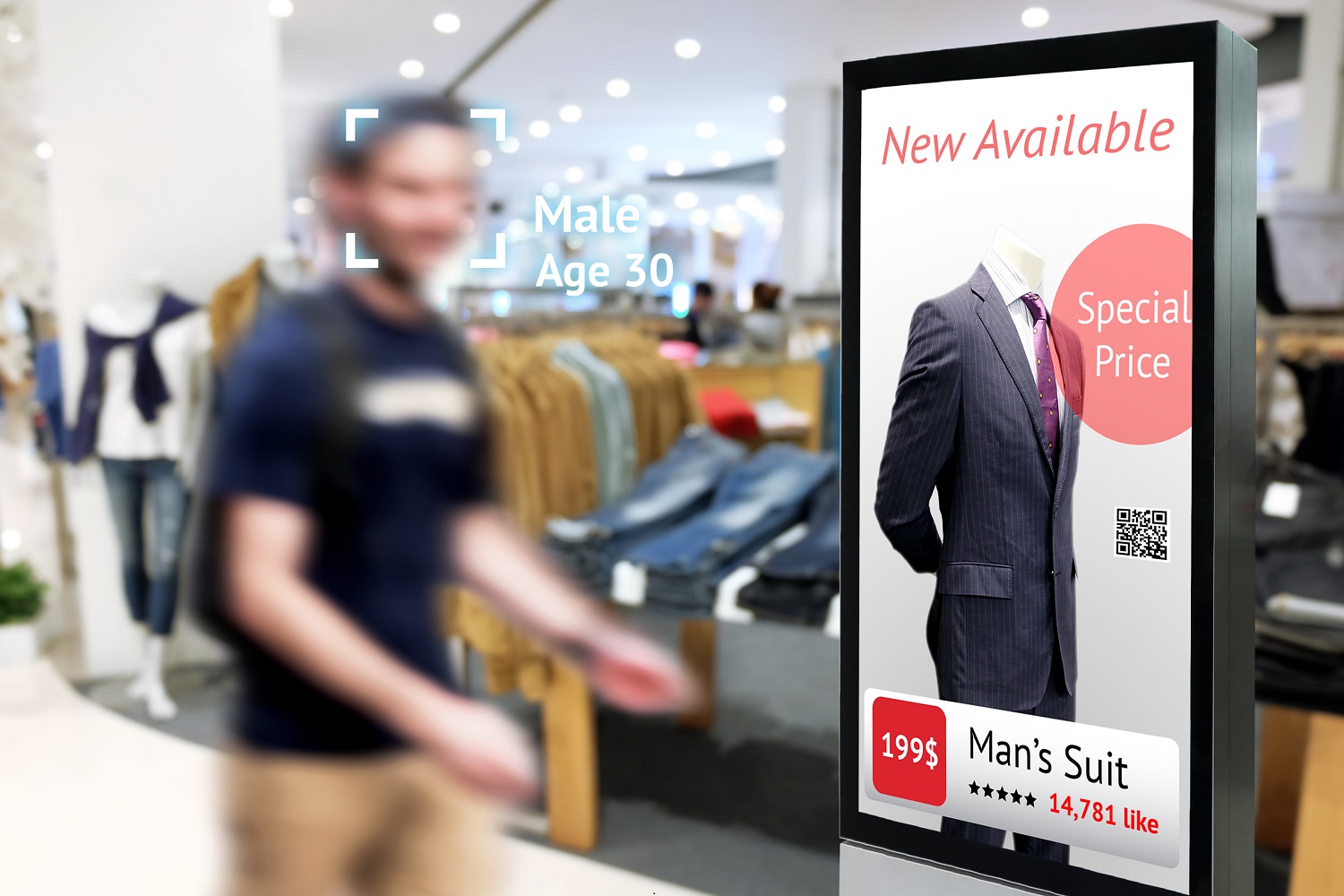The Hottest Digital Marketing Trends in 2020

With the lightning speed of the digital marketplace, there is no resting on your past successes or accomplishments. For this reason, it is never too soon to start preparing yourself and your business for the next big thing on the horizon.
Here are four top trends to help you advance your digital marketing for 2020 and beyond.
1. Chatbots
One potential addition to your digital marketing site that is gaining tons of traction is the chatbot. These are a huge asset to a company because the concentration and availability of information have changed the way business runs. As a society, we have moved well beyond the Information Age straight into the Age of Convenience.
The Age of Convenience
As the speed and reliability of our tech improved, so did our expectations. Technology conditioned people to have high expectations in just about all areas of our lives.
Standards are high when it comes to speed and accuracy. It is important to remember that your customers’ patience is dwindling. Consider these statistics:
- If a web page takes two seconds to load, there is a small chance (10%) that a customer will click elsewhere
- When your page takes four seconds to load site abandonment jumps to 25%
- Customers who have to wait more than ten seconds on a web page leave the site at a rate of around 50%
What Are Chatbots?
A chatbot is a computer program built to communicate with human users and assist humans with various web applications. The chatbot provides a customer with a typically pleasant and usually immediate interaction across a multitude of platforms.

Chatbots can automate your customer service
How Can Chatbots Help With Customer Service?
A well-designed chatbot is a valuable asset to most companies. According to Business Insider, chatbots are a nearly indispensable tool for Australian businesses. Chatbots are helpful in various ways, including:
- Provide customer service 24/7
- Reduce staffing costs
- Funnel queries to the correct location
- Efficient service
- Consistent with an absence of moods or emotions
- Serve as a bridge to your business
- Timesaving for you and your customers
Do Consumers Like Dealing With Chatbots?
The quality of the interaction influenced customers’ responses to dealing with chatbots. Even though 48% of respondents to a Mindshare report said speaking with a chatbot pretending to be a human seemed creepy, 63% of people in the same survey would gladly message a chatbot as a way to reach out to a business.
Other statistics also point to the willingness of customers to engage with chatbots.
- 29% of consumers say that chatbots are their preferred way of contacting a business
- 43% of Australians surveyed said they dealt with a chatbot within the last 12 months
- Of those who dealt with a chatbot, 35% felt the bot successfully resolved their issue or answered their question
- A majority of consumers said chatbots are easier to work with than the typical webpage
- Self-service using a chatbot, texting, or instant messaging all ranked higher than working with a member of a call centre staff. Additionally, consumers believe in using a phone call to a business as a last resort to deal with a company or resolve a problem
- Consumers have high hopes for chatbots in the future as 79% of those surveyed believe that at some point chatbots will be better than human assistants.
All interactions with chatbots were not ideal. Some Australians surveyed reported less than satisfactory results.
- 22% of consumers said they did not feel the chatbot had the skills needed to address their problem or concern
- 27% of customers who did not get their problem resolved by a chatbot received directions to call the business’ customer service representatives
- 14% of those with unresolved queries were instructed to fill out a web form
Although they are still evolving and improving, many businesses will find chatbots an excellent trend to take into 2020.
2. Social Media Influencers
One undeniable trend in digital marketing for 2020 involves entering the realm of the social media influencer. The ability of social media influencers to persuade consumers is a phenomenon that continues to grow across many platforms.
What is a Social Media Influencer?
Generally speaking, a social media influencer is someone who has a large number of followers on one or more social media platforms.
Good influencers create content capable of making their followers feel connected to them. This connection helps the influencer sway opinion about products, businesses, and larger issues. Influencers also drive business to the products they are paid to endorse.

Social media influencers can promote your product or services to thousands of people
Another way to look at it is the social media influencer does a job that is similar to a celebrity endorser. Except that the influencer creates, edits, and posts their content and receives less compensation than a celebrity.
How Can a Social Media Influencer Help My Business?
There are several ways an influencer can help your business.
- Increase of engagement with your brand
- Boost sales of your product
- Put your product or service in front of a well-targeted audience
- Can touch very specific points for your customers
- Build stronger relationships with customers
- Increase the trust and authority factors for your site
Will Potential Customers Pay Attention to My Influencers?
A study by The Exposure Company looked at Australians’ response to social media influencers. The research showed the following statistics:
- A little more than 40% of those surveyed prefer to buy a product after an influencer makes a post about it
- 68.2% of people have positive or neutral opinions about sponsored products
- A whopping 70% of Australians turn to social media to research products before making a purchase
- Over 50% of people read influencer reviews or blog posts about a product
- One-quarter of those surveyed will use online discount codes they received from a social media influencer
What Kind of Business Benefits From a Social Media Influencer?
While most businesses can get a bump from an influencer, consumers look for influencers in these categories:
- Technology
- Food
- Travel and accommodation
- Fashion
- Electronics
- Beauty
Are Influencer Campaigns Foolproof?
While social media influencers are often extremely successful in helping a business grow, nothing is guaranteed. Here are a few insights to help with your campaign:
- A bad fit between your brand/product and the influencer representing you can tank a campaign before it begins. Make sure the person working on your behalf mirrors your philosophy, or they will not seem authentic.
- Look for influencers who seem like they could be your customers. This plays into the meshing of philosophies a little, but it is more about an influencer who makes sense for your brand. If you specialise in electronic equipment, even the best influencer will not help you if they are known for vegan health products
- Take the time to look at how the audience responds to the influencer and your product. It is also a smart idea to ask your influencer if you can see their audience insights
- Consider working with an influencer who is not yet at the peak of their popularity but is rising. Not only are you more likely to strike a better deal, but you will also get more attention. Some influencers represent many companies. By working with an influencer who is not as well-known, you will not get lost in the shuffle of a very busy social media influencer
Social media influencers have turned the traditional method of product endorsement on its head. Much of the appeal to consumers is the unconventional and organic nature of the trend.
3. Artificial Intelligence
Even in the 21st century, there are still plenty of business owners who view artificial intelligence (commonly known as AI) through a lens biased by science fiction.
Regardless of how some view AI, the idea is experiencing a rapid refinement that will change how businesses execute their digital marketing campaigns.
Artificial Intelligence Defined
AI is defined as the discipline of creating computers with the capacity to problem solve in a human-like manner. The goal of AI is making producing machines that can work as well as the human mind. The definition is often dissected further by dividing general and narrow AI as well as rule-based AI and machine learning.
What Are Some Current Examples?
- Facial recognition programs
- Language translating programs
- Self-driving and driver-assist features on cars
- Digital assistants
- Online advertisements
- Security systems
- Chatbots
- Maps and travel information
How Can Artificial Intelligence Enhance My Digital Marketing?
There are so many variations of AI that the assistance it brings to companies is nearly limitless. Here are several ways that artificial intelligence can impact your business:
- Programmatic Advertising – Artificial intelligence is the driving force behind making sure the right individuals see advertisements that are pertinent. While the advertising industry used to be almost a pure creative discipline, AI can enhance creativity to create memorable and unique experiences. Additionally, AI can target consumers and provide relevant ads. This saves you money. Instead of ads that are irrelevant and usually ignored, AI makes sure your ads get to people who have an interest in your products or services.
- Customer Behaviour Analysis – For years, marketers worked to understand consumer behaviour. Now, AI is able to help analyse and identify certain aspects of consumer behaviour. This facet of AI relates to programmatic advertising in that artificial intelligence looks at collected data to help your business see patterns and gear marketing towards the correct customers.
- Improve Your Return On Investment – If you use AI to collect and analyse data from previous marketing plans, you can know how to plan future campaigns that are effective. By using AI in this way, you also can gain insight into who your target customers are and how to get their attention.
AI Can Fill the Shortage of Workers With Data Skills
Examining data from past marketing plans is one of the best ways to evaluate what works and what falls short with your customers. However, preparing and incorporating data for analysis is a time-consuming task.
By using artificial intelligence to handle preparing and integrating the data for analysis, companies free the time of their skilled employees to allow analysing and interpreting the findings. Automating the most tedious tasks will save time, effort, and money.
There is an ever-increasing need to access real-time analytics, as opposed to historical data. Tracking responses as they occur is necessary to keep up with consumer-driven changes in today’s digital marketplace. Artificial intelligence can keep up with fast-paced changes and allow businesses to make adjustments that will optimise their digital advertising.
AI is not the end of the Australian worker. Although science-fiction narratives tout the idea of machines gaining power over their human creators, reality says otherwise. An OECD study revealed that 7% of jobs in Australia could feel a negative impact from AI.
4. Personalised Digital Marketing
Standing out from the pack is ultra-important in the virtual marketplace. As consumers demand more from the companies who are competing for their business, tapping into personalisation is becoming a brilliant way to separate from other businesses.
What is Personalised Digital Marketing?
Personalised digital marketing uses facts about customers’ behaviours, pertinent information, and demographic details to deliver advertising the recipient will find useful and interesting. By delivering relevant material in a timely manner, a company will often grab the attention of a customer.

Personalised digital marketing can grab a customer’s attention
How Does Personalisation Build Relationships With Consumers?
Personalisation feeds into several areas that are important to today’s consumer.
- The Narrative – Unlike many previous generations, millennials and the generations that follow are interested in sharing numerous details of their lives on social media. However, they prefer to share an interesting narrative, not just an image of a new purchase.
There is an exponential improvement of the narrative when something can connect the person and the purchase in a personal way. It is the difference between a picture of a burger and chips captioned with the phrase ‘my lunch’ and the same image with the description that reads, “I went to the new bistro today, and I was able to get a soy burger with vegan cheese on a gluten-free roll and a side of locally-sourced baked kale chips.” The connection between the customer’s lifestyle and lunch elevates the experience as well as the bistro. This improves the chances that friends or followers of the person posting will eat there as well.
- Trust – This may sound like a matter of delivering on what you promise, but that is only a part of the factor of trust that is a part of a personalised campaign. Offering brand transparency is a crucial facet of gaining the trust of this generation of consumers.
A good way to build both trust and transparency is to add a human factor to the advertisement. Allowing a peek inside places that were once for staff only or a connecting component between the consumer and the product goes a long way in this area. For example, if you make pet products, allowing a customer to add Fluffy or Fido’s name to a collar or pet bed is good. However, building a section of your web page that features employees with their pets will create a better bond between your consumer and your brand.
- Responsibility – Savvy consumers are interested in products that can make a positive change in the world. This particular part of personalisation can be tricky as not everyone shares the same definition of positive change.
In showing your intentions to do good, you must stay true to your brand or the strategy can blow up in your face. It sounds simplistic, but it can wreak havoc if your attempt of showing responsibility is haphazard. For example, if you make and sell fur coats, do not make a bold stance as an animal rights advocate. Doing so risks being called out on every imaginable social media platform while losing any trust or transparency you had accumulated.
How Does Personalisation Help My Business?
By personalising your digital marketing, you are giving yourself an advantage over competitors who are unwilling or unable to follow suit.
- Loyalty – Consumers who feel as if they matter to a company will give their loyalty and good word-of-mouth advertising. Nearly half of customers surveyed say they will return to a business where they had a personalised experience.
- Added Sales – Increasing your sales by personalising your customers’ experience is not difficult. If your customer orders a dog bed, a collar, leash, and food dishes, suggesting dog treats or toys (perhaps with a small discount) practically guarantees the sale.
- Fewer Returns – When shoppers feel understood and trust your guidance (either online or in-person) they are likely to be happy with their purchase
Applying available data to personalise your customers’ experience is worth every bit of effort involved. As the consumer changes, businesses must change or be left behind.
Conclusion
Consumers hold the lion’s share of the power in today’s business dynamic, and they are interested in speed and service. Many consumers demand that businesses meet their needs almost as soon as a thought comes to mind.
At the end of the day, improving your digital marketing by leveraging tech is not an end unto itself. The way you approach the changes you make should depend on the value the technology brings to your business and your customer.
The vast array of new and improving digital marketing options may look enticing. However, remember that if the money you spend on tech does not improve, refine, or add value, it is not an investment; it is a waste.


